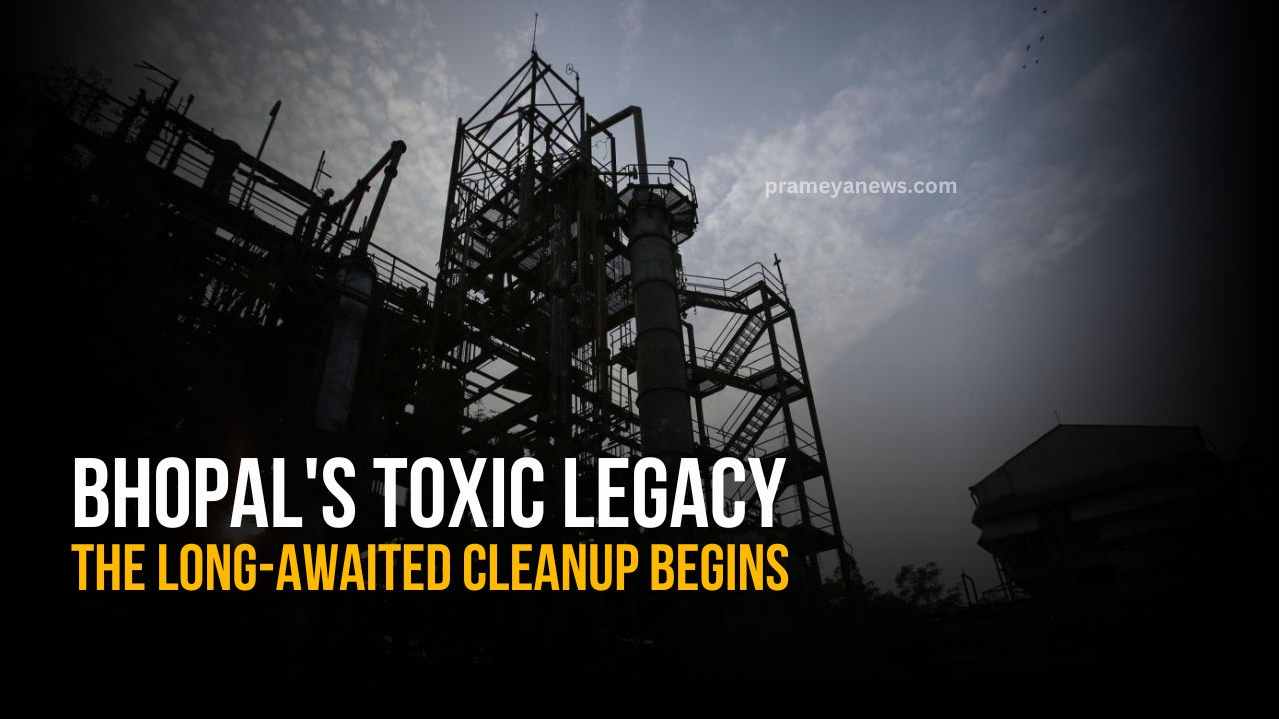

Imagine a city forever scarred by an invisible enemy, a silent killer that struck 40 years ago and left a toxic legacy lingering in its wake. That city is Bhopal, India, and the enemy was the catastrophic gas leak of 1984, an event that etched itself into history as the world's worst industrial disaster. Now, after decades of delay, a crucial step towards healing is finally being taken. A massive operation has commenced to remove and safely dispose of 337 metric tonnes of hazardous waste that have remained on the grounds of the defunct Union Carbide pesticide factory, a haunting reminder of the tragedy that unfolded there. This isn't just a cleanup; it's a long-overdue reckoning with a dark chapter in industrial history, a testament to the enduring struggle for environmental justice.
A Long Time Coming: The 1984 Bhopal Gas Tragedy
It was a night etched in infamy – December 2, 1984. A leak of methyl isocyanate (MIC) gas from the Union Carbide plant turned Bhopal into a scene of unimaginable horror. This highly toxic chemical, used in pesticide production, swept through the city, leaving over 15,000 dead and impacting the health of more than 600,000 people. It was a catastrophe of unprecedented scale, exposing glaring gaps in industrial safety and corporate accountability. The tragedy is not just a historical event; it is a long-lasting reality for those suffering from persistent medical issues and health complications.
The Cleanup Operation: A Meticulous Process
The cleanup operation is a complex undertaking, demanding meticulous planning and execution. Around 337 metric tons of toxic waste is being carefully removed and the destination is Pithampur, an industrial area located around 250 kilometers from Bhopal. The waste consists of a cocktail of dangerous chemicals, including:
Safety First: Precautions and Protocols
Moving this toxic cocktail is no easy feat. Swatantra Kumar Singh, Director of the Gas Tragedy Relief and Rehabilitation Department, outlined the safety measures in place. Think of it as a carefully choreographed operation involving twelve GPS-equipped container trucks, each capable of carrying 30 tonnes of hazardous material. To ensure a smooth and secure journey, a "green corridor" has been established between Bhopal and Pithampur, complete with police escorts and ambulances on standby.
But the safety measures don't stop there. Workers handling the waste are kitted out with specialized safety gear and masks. They work in short, 30-minute shifts, followed by mandatory rest periods, to minimize exposure. "All chemicals are being packed in specially designed, leak-proof bags," Singh emphasized, highlighting the commitment to preventing any further harm to people or the environment.
Pithampur: The Final Destination
The industrial hub of Pithampur, located approximately 250 kilometers from Bhopal, is where this hazardous waste will meet its final fate. Specialized facilities in Pithampur are equipped to handle and safely dispose of industrial waste, ensuring that these toxic substances are neutralized and prevented from causing further environmental damage. The choice of Pithampur underscores the need for specialized infrastructure to manage hazardous materials, a critical aspect of industrial safety often overlooked.
A Step Towards Healing, A Reminder of Responsibility
The commencement of this cleanup operation, four decades after the Bhopal gas tragedy, is a significant step, albeit a belated one, towards addressing the lingering environmental consequences of the disaster. It's a powerful symbol of the ongoing struggle for justice for the victims and a stark reminder of the devastating impact of industrial negligence. While the removal of this toxic waste is crucial, it's only part of a much larger picture. The long-term health impacts on survivors, the need for continued environmental monitoring, and the importance of holding corporations accountable for their actions remain pressing issues. The Bhopal tragedy serves as a cautionary tale for the world, highlighting the critical need for stringent industrial safety regulations, corporate responsibility, and a commitment to environmental protection. This cleanup is not just about removing waste; it's about acknowledging past mistakes, striving for a safer future, and ensuring that such a catastrophe never happens again. The echoes of Bhopal must continue to resonate, reminding us that the price of industrial progress should never be human lives or environmental devastation.